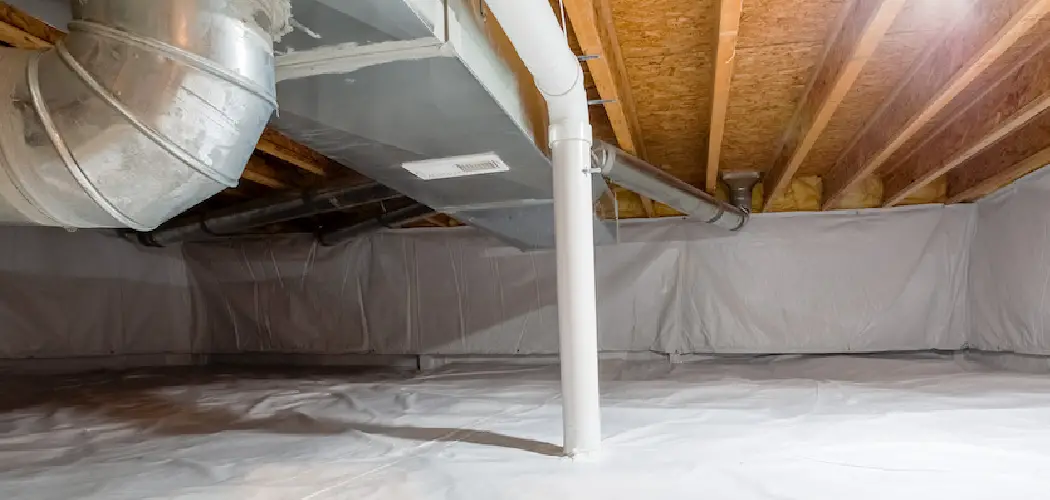If your house has a crawl space, you know humid air can become trapped in these areas. High levels of humidity can make it difficult to maintain comfortable temperatures indoors and promote mold growth. Unfortunately, mitigating moisture can be tricky since the area is often hard to access.
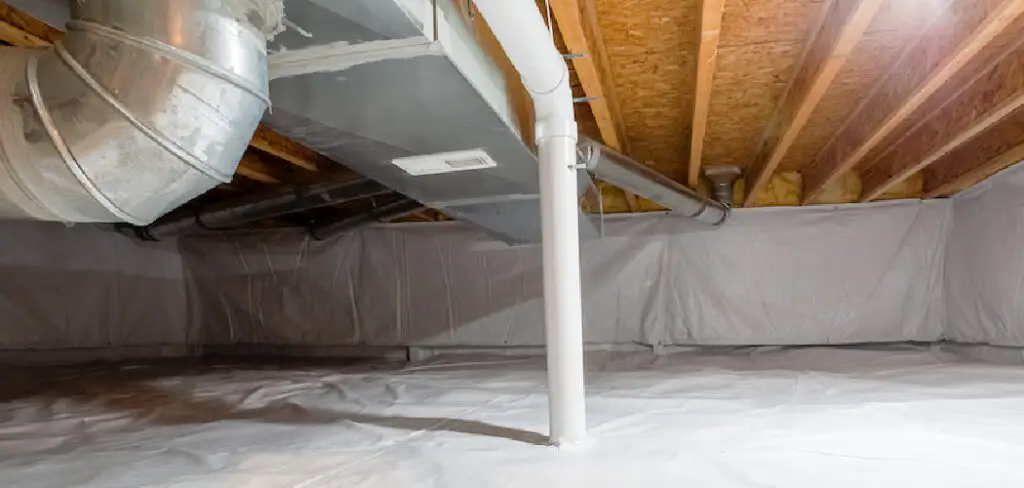
That being said, there are several steps homeowners can take to reduce the amount of humidity in their crawl spaces and prevent costly long-term damage! In this blog post, we’ll review some tips for how to lower humidity in crawl space so that you can ensure a safe indoor environment for your family.
What Is the Ideal Humidity Level for a Crawl Space?
When it comes to determining the ideal humidity level for a crawl space, there are two important factors to consider: the relative humidity and the dew point. The relative humidity is a measure of how much moisture is present in the air compared to how much moisture could be present.
It’s measured as a percentage on an outdoor thermometer or hygrometer. The dew point is the temperature at which water vapor condenses into liquid form, indicating the presence of high levels of moisture in the air.
Ideally, your crawl space should have a relative humidity that falls between 30-50%. This range ensures proper air circulation and can help prevent mold growth or other damage caused by excess moisture. The dew point should also stay below 65°F, as temperatures above this can cause condensation to form on surfaces and create an environment that encourages the growth of mold.
By properly controlling the humidity levels in your crawl space, you can help ensure that it remains dry, comfortable, and safe for you and your family. This will also protect your home from any damage caused by excess moisture. To do this, you should take steps to ventilate the area and upgrade insulation if needed.
Additionally, consider installing a dehumidifier to keep humidity levels within an ideal range year-round. With these measures in place, you can have peace of mind knowing that your crawl space is well-protected from damage due to excess moisture.
10 Methods How to Lower Humidity in Crawl Space
1. Improve Ventilation
One of the best ways to lower humidity in your crawl space is to improve ventilation. Crawl spaces are typically poorly ventilated, which can lead to a build-up of moisture. By increasing the amount of ventilation in your crawl space, you will help to reduce the humidity levels.
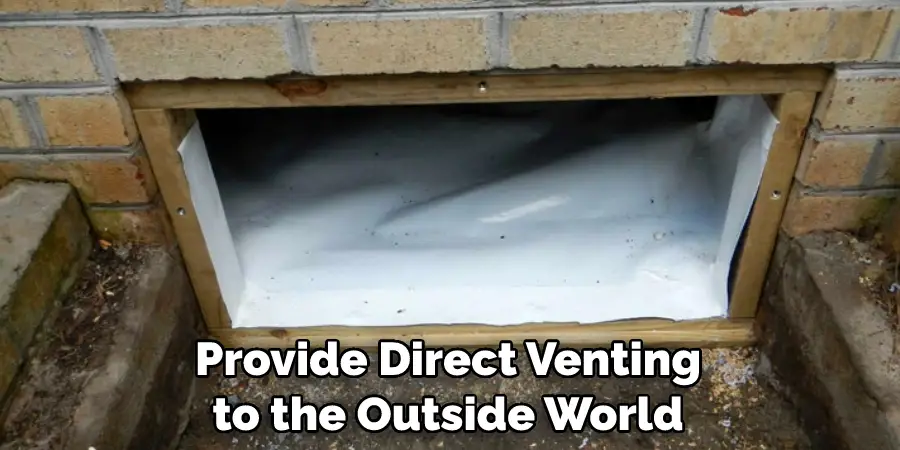
If possible, try to provide direct venting to the outside world. This can be done by installing vents in the foundation walls or in the floor of your crawl space. Another option would be to install a mechanical ventilation system that will draw air in from the outside and exhaust it out of your crawl space.
2. Use a Dehumidifier
Another effective way to lower humidity levels in your crawl space is to use a dehumidifier. Dehumidifiers work by removing moisture from the air, which can help to reduce the overall humidity levels in your home.
Dehumidifiers can be a great way to help reduce the amount of moisture in your crawl space, but it is important to make sure that you select the right size for your needs. When purchasing a dehumidifier, you should also make sure to check the manufacturer’s instructions and maintenance recommendations to ensure that it operates as efficiently and effectively as possible.
Additionally, you may need to periodically empty the reservoir or tank so that the dehumidifier can continue to work effectively.
3. Seal Any Leaks
If your crawl space has any leaks, it is important to seal them as soon as possible. Leaks can allow moisture to enter your crawl space, which will increase the humidity levels. By sealing any leaks, you can help to prevent moisture from entering your home and causing problems.
Also, make sure that your home is properly insulated to keep the indoor air quality at a comfortable level. You can use caulk or weather stripping to seal any cracks or gaps around windows and doors.
Additionally, make sure that all vents, ducts, and pipes are sealed tightly to prevent moisture from entering the space. This will help to keep your crawl space dry and prevent humidity from building up in the area.
4. Insulate Your Crawl Space
Insulating your crawl space can also help to lower humidity levels. When insulation is installed properly, it can create a barrier that will prevent moisture from entering your home. This will help to keep the overall humidity levels down and make your home more comfortable.
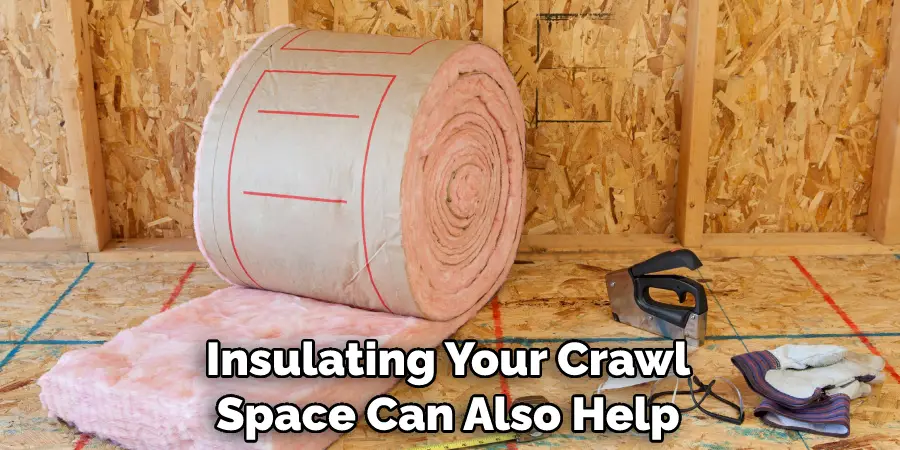
Additionally, insulation can help to improve your energy efficiency and reduce heating and cooling costs. However, make sure that you use a high-quality insulation material and have it installed by professionals for optimal results.
5. Use a Humidity Monitor
Using a humidity monitor is a good way to keep track of the humidity levels in your crawl space. By monitoring the humidity levels, you can be sure that they are staying at a safe level and take action if they begin to rise.
A humidity monitor is a small device that can be placed in the crawl space to measure the humidity levels. It will alert you when the humidity levels begin to rise, so you can take action and lower the humidity level before it becomes a problem. By monitoring the humidity levels in your crawl space, you can be sure that it stays at a safe and healthy level.
6. Keep the Crawl Space Dry
It is important to keep your crawl space as dry as possible in order to prevent mold and mildew growth. Mold and mildew thrive in damp and humid environments, so it is important to keep the area as dry as possible.
You can do this by using a dehumidifier or by improving the ventilation in the area. Make sure to check the crawl space regularly for signs of moisture and take steps to get rid of any standing water or other dampness. You may also want to consider installing a vapor barrier to help keep the moisture out of your crawl space.
7. Clean Up Any Water Damage
If there is any water damage in your crawl space, it is important to clean it up as soon as possible. Water damage can lead to mold and mildew growth, which can increase the humidity levels in your home. By cleaning up any water damage, you can help to prevent these problems from occurring. If you are unsure how to clean up water damage, consult a professional for help. They can properly assess the situation and develop a plan to address the issue. Additionally, they will be able to provide advice on how to prevent water damage from occurring in the future.
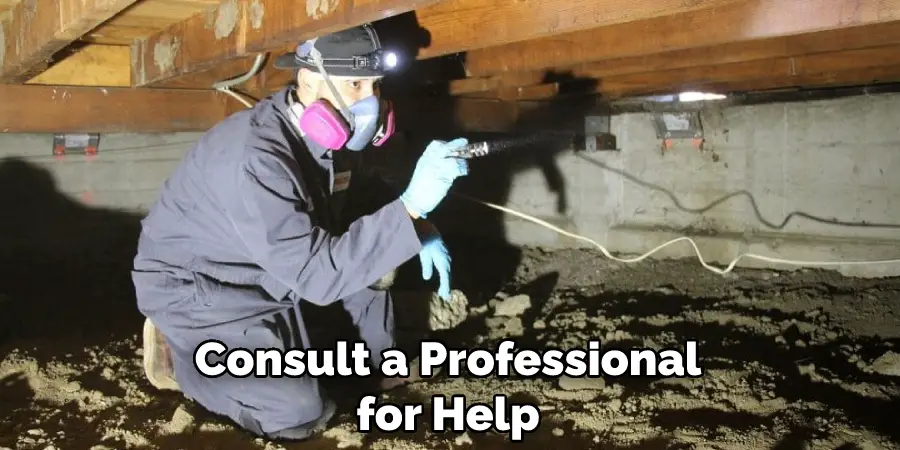
8. Remove Any Standing Water
Standing water is another common source of moisture in crawl spaces. If you have standing water in your crawl space, it is important to remove it as soon as possible. Standing water can lead to mold and mildew growth, so it is important to get rid of it quickly. You can remove standing water by using a wet/dry vacuum or by mopping it up with a sponge or cloth.
Once you’ve removed the water, make sure to dry the area thoroughly. You may also want to look into using a dehumidifier to help speed up the drying process. Additionally, take steps to make sure that standing water does not accumulate in the future by making sure all drainage systems are functioning properly and not blocked.
9. Install an Exhaust Fan
Installing an exhaust fan in your crawl space can also help to reduce humidity levels. An exhaust fan will create air circulation in the area, which can help to keep moisture levels down. This is especially effective when combined with the other steps listed.
Make sure to have your fan professionally installed by an HVAC technician so that it is properly sealed and will last for a long time. Additionally, make sure to check the fan often and change the filter regularly, as clogged filters can cause the fan to stop working. With a properly installed exhaust fan, you can keep your crawl space’s humidity levels low and healthy.
10. Install a Vapor Barrier
Finally, you can help to reduce humidity levels in your crawl space by installing a vapor barrier. A vapor barrier is a sheet of plastic that will prevent moisture from entering your home and create an ideal mold and mildew growth environment. Installing a vapor barrier can be a good way to keep humidity levels down in your home.
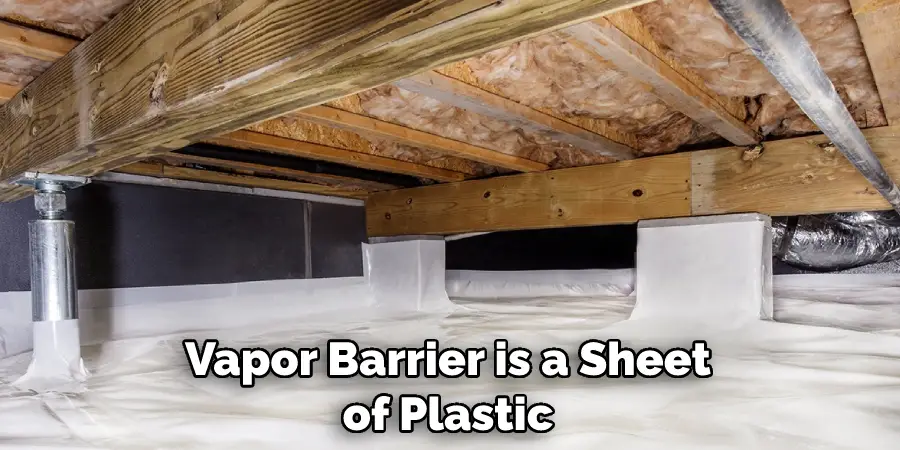
Conclusion
These steps should be taken alongside general repairs that may need to be done due to damage from high levels of humidity. With these steps in place, your crawl space will remain dry as it can be! To make sure you know all the ins and outs of how to lower humidity in your crawl space, follow this guide on How to Lower Humidity in Crawl Space today! Don’t delay—taking control of your crawl space’s humidity can make all the difference when preventing future damage.

